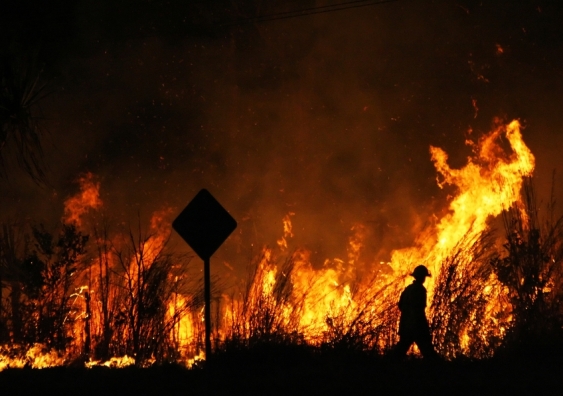Beyond Compliance: Enhancing Property Safety And Security with a Thorough BAL Report Analysis
Beyond Compliance: Enhancing Property Safety And Security with a Thorough BAL Report Analysis
Blog Article
Exactly How BAL Report Impacts Shrub Fire Protection Procedures
In the world of bush fire protection, the Structure Assault Degree (BAL) record stands as an important tool that considerably influences the safety and durability of buildings in fire-prone areas - BAL Report. The effect of a BAL assessment expands much past mere documentation; it functions as the foundation for establishing the appropriate building standards and fire security procedures essential to alleviate the dangers presented by bushfires. As neighborhoods come to grips with increasingly severe fire seasons, comprehending exactly how the BAL report shapes these protective procedures ends up being vital for policymakers, homeowners, and builders alike
Recognizing the Bushfire Strike Degree

Importance of BAL Report Assessment

Furthermore, the BAL record assessment offers as a fundamental step in adhering to legal obligations and needs related to bushfire security. Neighborhood councils and authorities often mandate the entry of a BAL report as part of the planning and building approval process to guarantee that homes are effectively secured against bushfire threats. Stopping working to conduct a comprehensive BAL report assessment can cause insufficient defense actions, leaving residential or commercial properties prone to ravaging bushfire events.
Construction Requirements Based Upon BAL
A thorough understanding of the Bushfire Strike Level (BAL) makes it possible for homeowner to implement building and construction standards customized to their details danger account. Building requirements based upon BAL are crucial in alleviating the influence of bushfires on buildings. The BAL rating classifies the prospective threat a home deals with throughout a bushfire on a range from BAL-Low to BAL-FZ (Fire Zone) Each BAL degree represents specific building and construction needs laid out in the Australian Conventional AS3959-2018 Building And Construction of Structures in Bushfire-Prone Areas. Residential properties identified as BAL-Low might only require fundamental measures such as clearing particles and maintaining gardens, while those in greater BAL categories require even more durable measures like ash screens, fire-resistant products, and secured home windows. Sticking to these construction criteria not just enhances the structural resilience of the home however additionally improves the general safety of locals throughout a bushfire event. As a result, homeowner must carefully consider their BAL ranking and abide by the equivalent building and construction my review here standards to adequately secure their residents and homes.
Carrying Out Fire Defense Procedures
With the foundation of construction criteria based upon Bushfire Attack Level (BAL) in location, the emphasis now changes towards the sensible execution of fire defense steps to fortify properties against bushfire threats. Applying Check Out Your URL fire security actions includes a combination of passive and energetic strategies to improve the durability of buildings in bushfire-prone areas. Passive steps consist of utilizing fire-resistant structure materials, mounting ember guards on vents, sealing spaces in wall surfaces and roofings, and keeping a clear space around the property devoid of combustible plants. Energetic actions incorporate having firefighting equipment easily offered, such as hose pipes and water pumps, along with developing a defendable room around the property by removing greenery and having a well-kept garden. In addition, establishing an emptying plan and ensuring all citizens recognize emergency situation procedures are important components of effective fire protection steps. By integrating both passive and active techniques, residential properties can substantially lower their vulnerability to bushfire cases and raise the safety of owners.
Shielding Residences Versus Bushfires
Efficiently safeguarding homes versus the harmful effects of bushfires requires a proactive and comprehensive strategy to fire defense measures. Homeowners staying in bushfire-prone areas must prioritize the implementation of different strategies to enhance their residential or commercial property's durability versus wildfires. One basic facet is developing a defensible room around the home by preserving a clear area devoid of flammable products. This includes frequently trimming plants, eliminating dead plants, and making certain a safe range in between trees and structures. Mounting fireproof roof covering products can also substantially reduce the risk of coal strikes and direct fire get in touch with. Additionally, securing gaps and vents to prevent ash invasion, as well as integrating fire-resistant doors and windows, can help strengthen the home's protection against bushfires. Investing in a reputable water resource, such as a well-kept automatic sprinkler or a dedicated water container, is important for providing water during fire emergencies - BAL Report. By welcoming a proactive stance and integrating these safety steps, property owners can dramatically enhance their opportunities of safeguarding their homes versus bushfires.
Conclusion
Finally, the Bushfire Assault Degree (BAL) report plays a crucial duty in identifying the required protection procedures against bushfires. By assessing the BAL, building criteria can be tailored to reduce the threats and make sure the safety of homes in fire-prone areas. Applying fire protection steps based upon the BAL record is important in safeguarding residential properties from prospective Source bushfire threats. It is important for home owners to prioritize BAL assessments and follow advised building requirements to enhance bushfire resilience.
In evaluating bushfire threat to residential properties, recognizing the Bushfire Strike Degree (BAL) is a vital element for carrying out efficient protection procedures. Generally, a clear understanding of the Bushfire Assault Level is essential for executing adequate defense actions and minimizing the effect of bushfires on residential or commercial properties.

Report this page